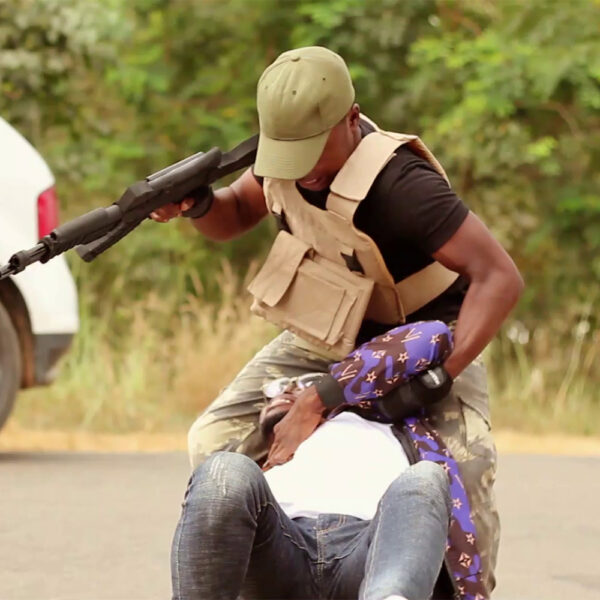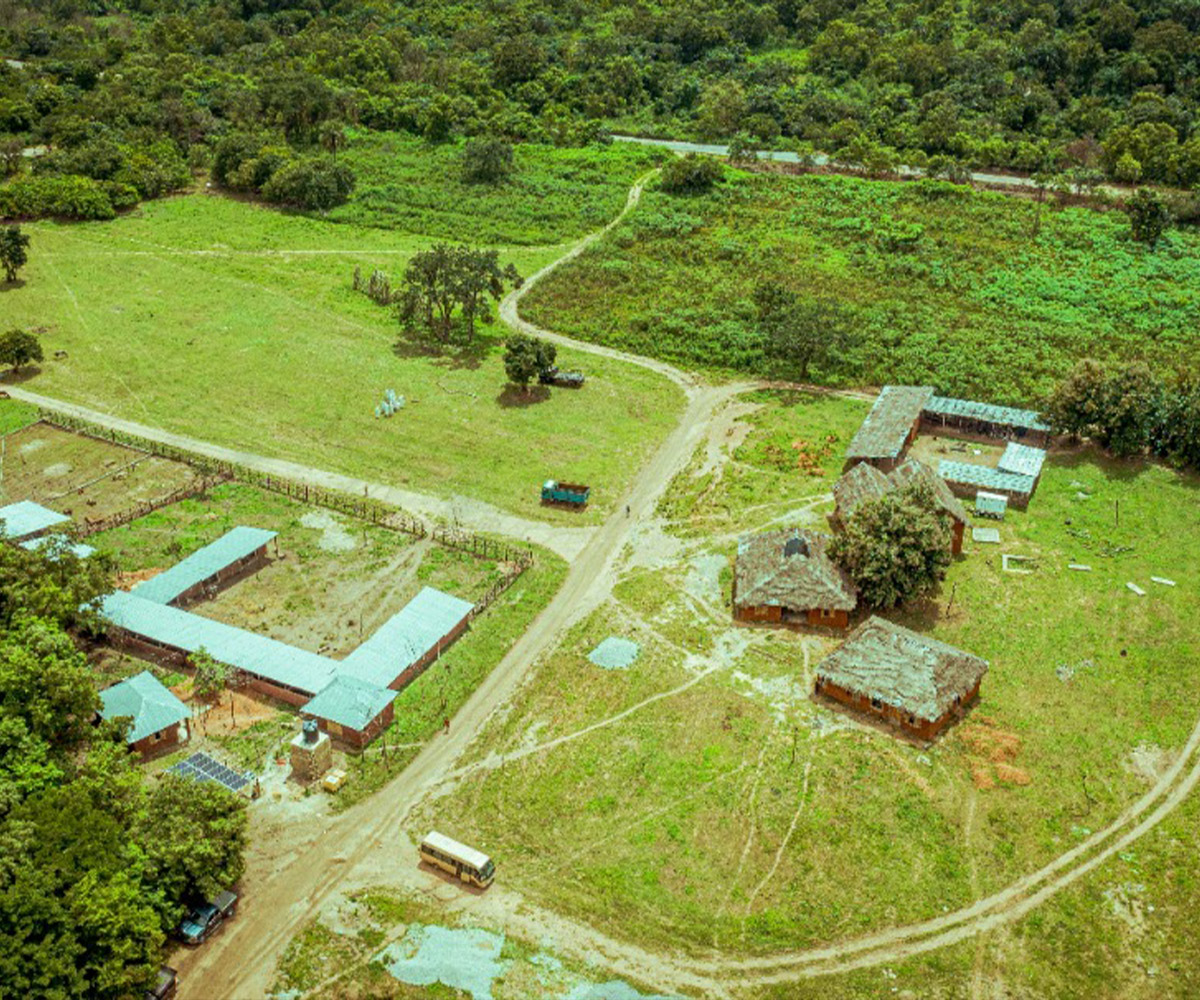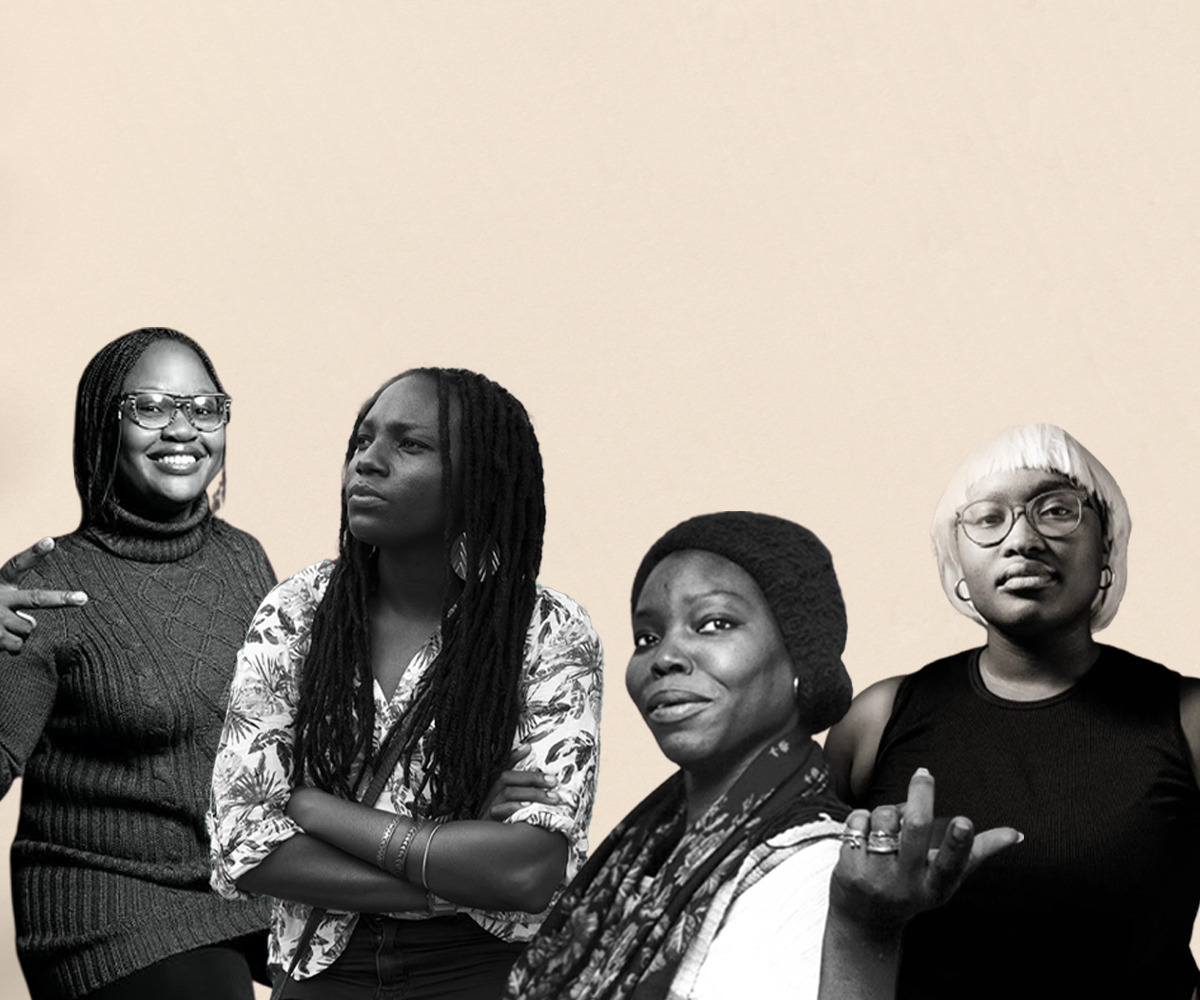
Photo credit: Adamson
Film & TV
Nollywood’s Stunts Sub-Industry is on the Rise

Photo credit: Adamson
Higher Nollywood budgets have accelerated the growth of a new profession: The Stunt Man
By Wale Oloworekende
September 2023
Over the last 15 years, the scope and trajectory of the film industry in Nigeria has undergone a revolution. Previously synonymous with the direct-to-video format, Nollywood has elevated its production quality to that of global cinematic releases and digital streaming content. As a result, the need for both high octane adventure and realism has never been greater.
With a new wave of noir productions like King of Boys, Shanty Town, and Brotherhood looking to capture the grit and grimness of Nigerian life, the need for realistic depictions of these experiences has warranted the rise in popularity of stunts coordinators who are helping to bring Nollywood’s elaborate and ambitious action sequences to life against all odds. “Originally, I was just an actor and stunt was something I only did for theatre and fun,” veteran Nollywood stunt coordinator, David ‘Mr Nollywood’ Patrick tells STATEMENT about his route into the profession. “As I grew up, I heard people say that stunt direction and coordination could also be applied in movies and that was intriguing to me so I started working on short movies as well as home videos before moving to cinema productions and finally movies made for streaming platforms.”
As one of the earliest recognisable faces in the stunt section of Nollywood, Patrick has been choreographing film sequences and coordinating stunts in Nollywood for the better part of two decades and helping to codify what the roles of stunt coordinators should be within an industry constantly in flux. “I spent a lot of time clarifying what we do and building publicity for the role over the years,” says the director who has worked on stunts for productions like Mamba’s Diamond, Merry Men 2, and Shanty Town. “I had to let people know that it shouldn’t be the work of the director to teach people martial arts or fighting on set. The director should focus on the conceptual aspect of the project while the stunts coordinator would focus on the physical aspects that need choreography. All that matters is that they work within the vision of the movie’s director.”
The arrival of streaming platforms like Netflix, Prime Video, and Showmax in Nigeria has opened up a new stream of capital to filmmakers allowing them to be more experimental with their work. “Nigerian producers are becoming braver in how they make movies and that’s what’s bringing stunts to the limelight in Nollywood,” a rising stuntman and fight choreographer, Michelangelo Ilesanmi, says. It’s an opinion that film journalist and critic, Daniel Okechuwku, agrees with: “We care more about stunts looking real these days so the way they are staged and cut in the editor’s room makes them nicer on the eyes. The reasons for this range from more exposure and film knowledge to having more capital to afford better stuntmen and train the actors on their stunts.”
In the last two years, Nollywood has witnessed a return to the Yoruba epic dramas that were a stock in trade at the turn of the 2000s. Films like King of Thieves (Agẹṣinkólé), Aníkúlápó, and Jagun Jagun are tremendously elaborate productions that rely on stunts and fight sequences to translate the bravado of their leading acts.
It can often be a challenge to ascertain what style of stunts works for movies like this that are situated around the 16th and 18th centuries. Rising stunts coordinator, Adamson Kolade, says that it all comes down to rigorous research and finding a style that works for the movie. “I had to go over the script for Jagun Jagun over and over because I wanted to understand the era,” he explains. “When I finished studying it, I decided to centre our fight sequences on a merger of old Indian and Nigerian methods. So, we created fictional fight sequences for a fictional movie.”
For all the excitement around the rise of stunts in Nollywood, it remains a profession fraught with difficulties and dangers ranging from training accidents to on-set incidents. According to Patrick, the biggest issue is the lack of healthcare insurance for stunt practitioners. “If someone dies on duty, they have literally died on their own so it’s a risk every time we go to work,” he says. “We don’t have a legally binding agreement with any production even for burials in the case of fatality. If I pull up official documents to be signed by productions, they’ll often cancel the contracts and scrap the fight scenes. Effectively, we’re sacrificing our lives and safety.”
Per Patrick, the rise of a new generation of stunt coordinators and directors eager to put their skills to the test could have an adverse effect on the push for better working conditions. “A lot of the new stunt practitioners are martial arts coaches or dancers who decided to transition to this field so they don’t often know the full scope of things,” he says. “I think the industry should have a resolve to improve the welfare of stunt practitioners. It should be reflected in the budgets assigned for the stunts department for movies as well. It should be up to producers and executive producers to ensure that stunt practitioners are protected against health emergencies and incidents.”




